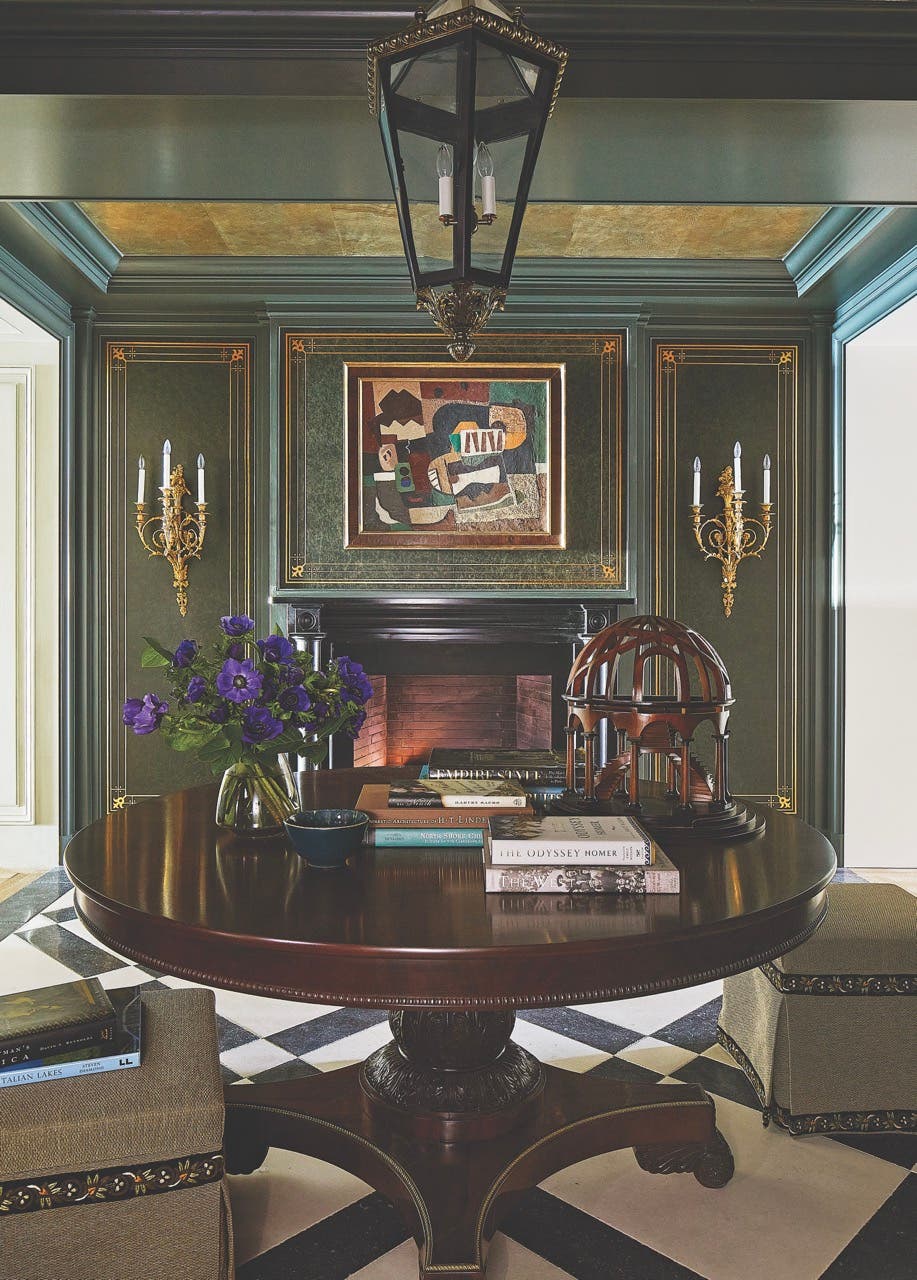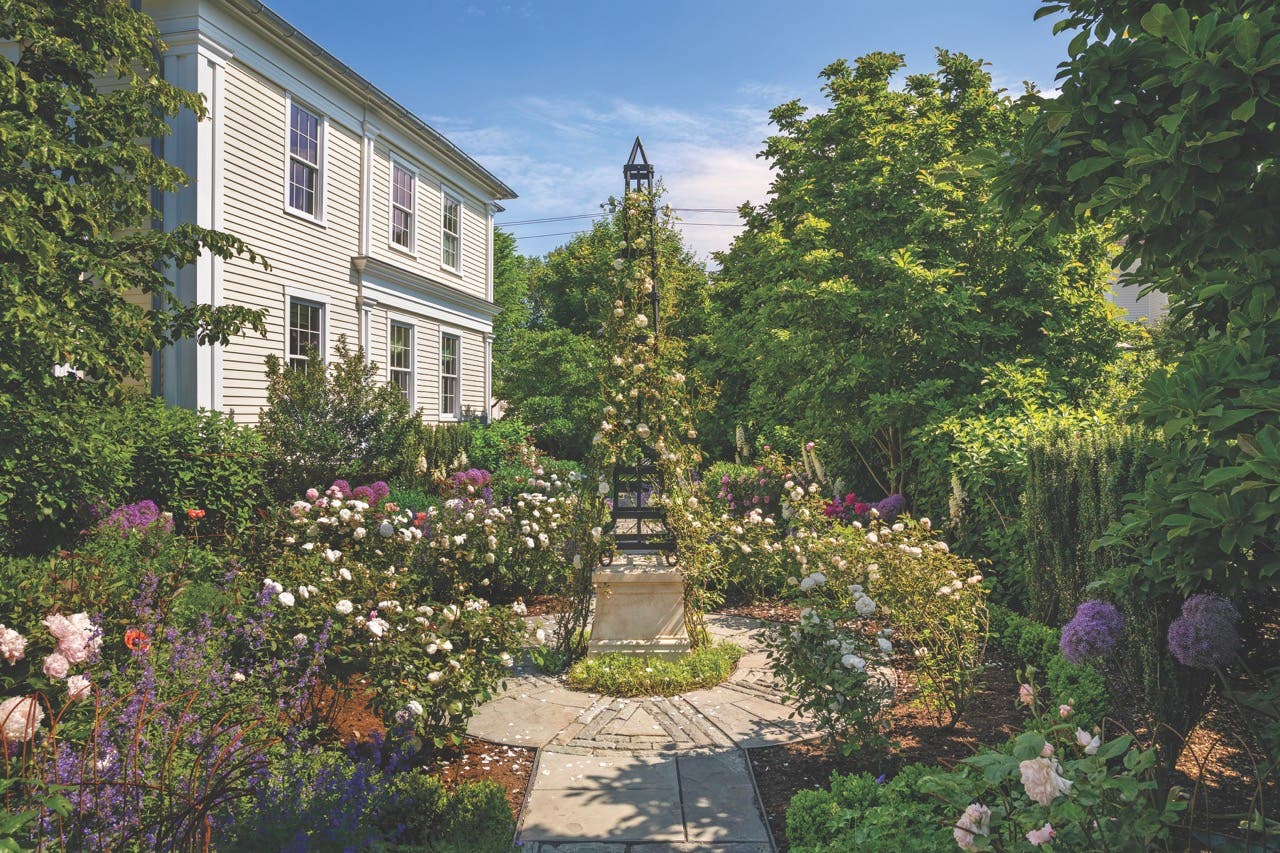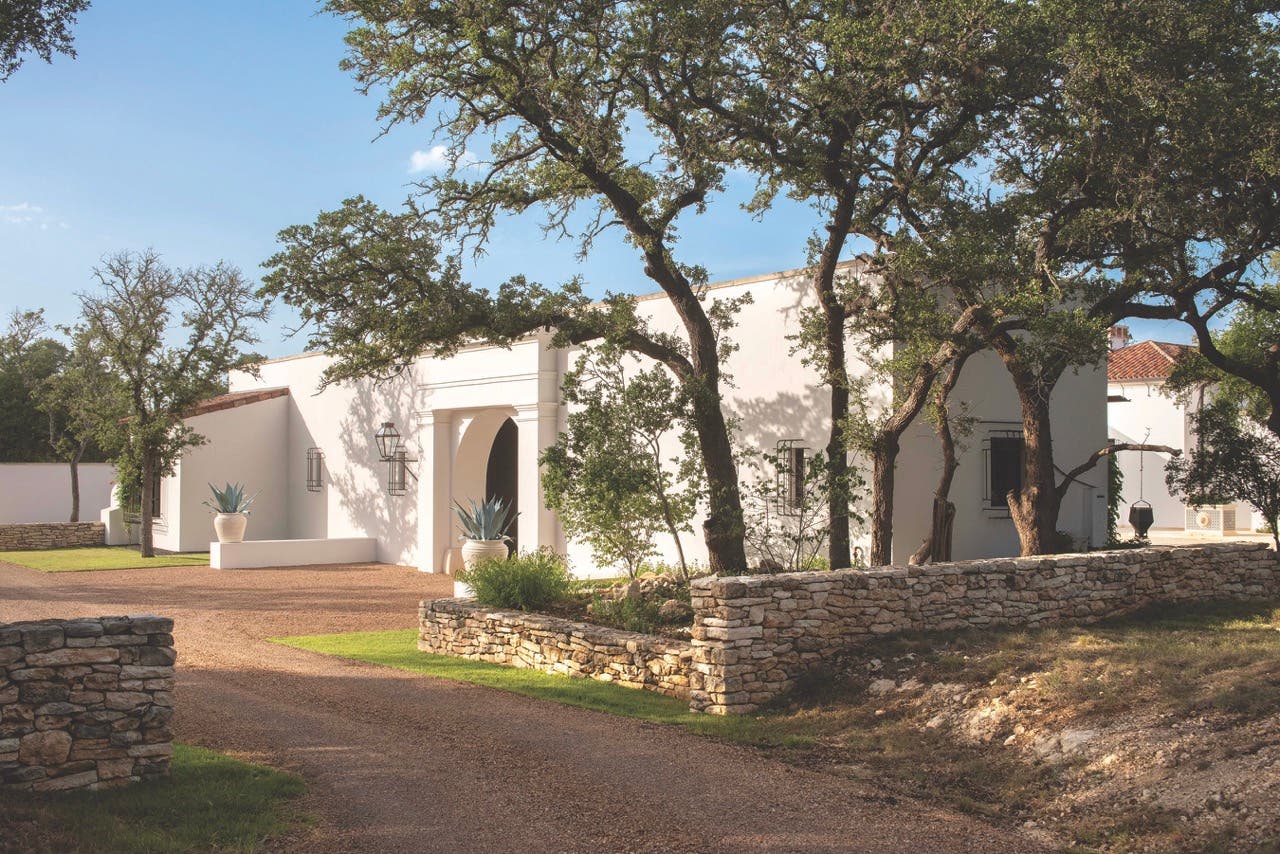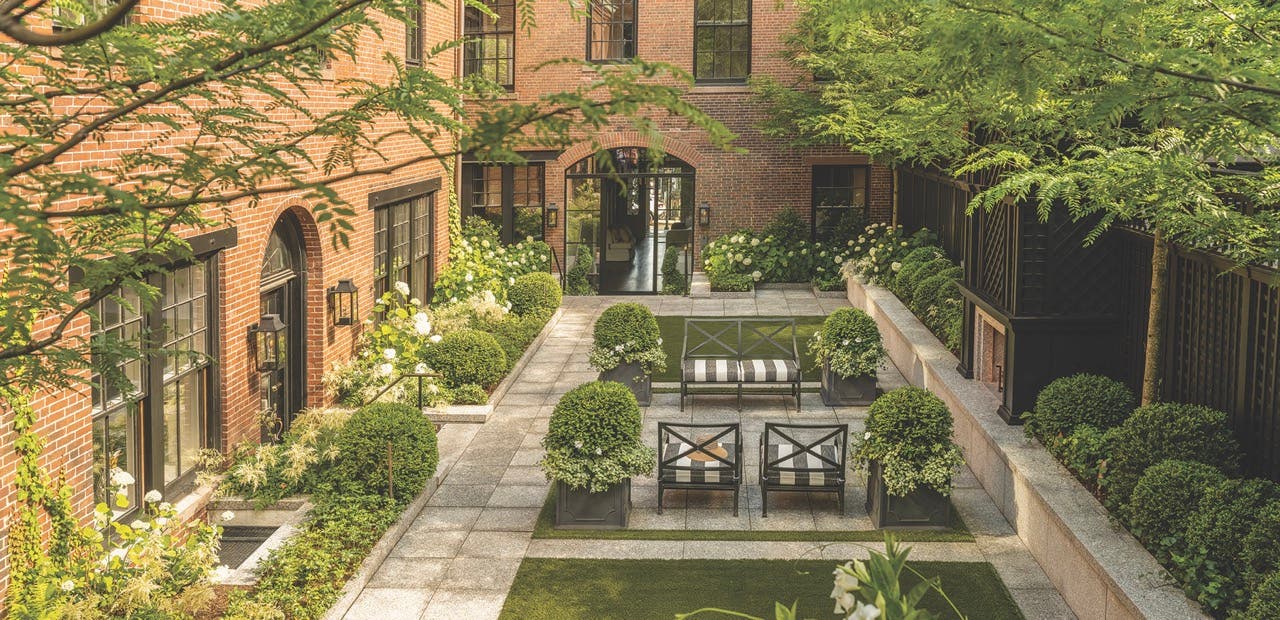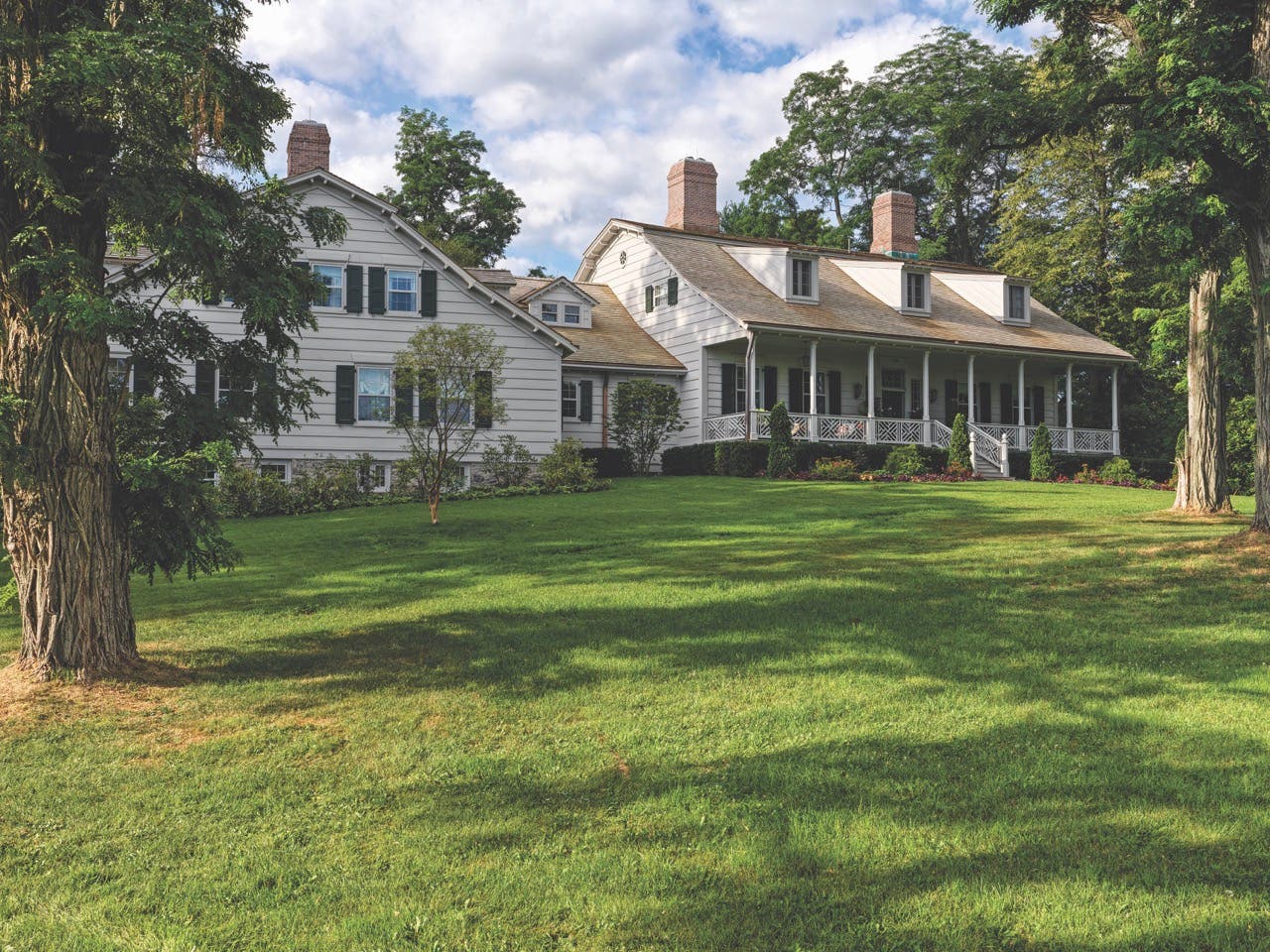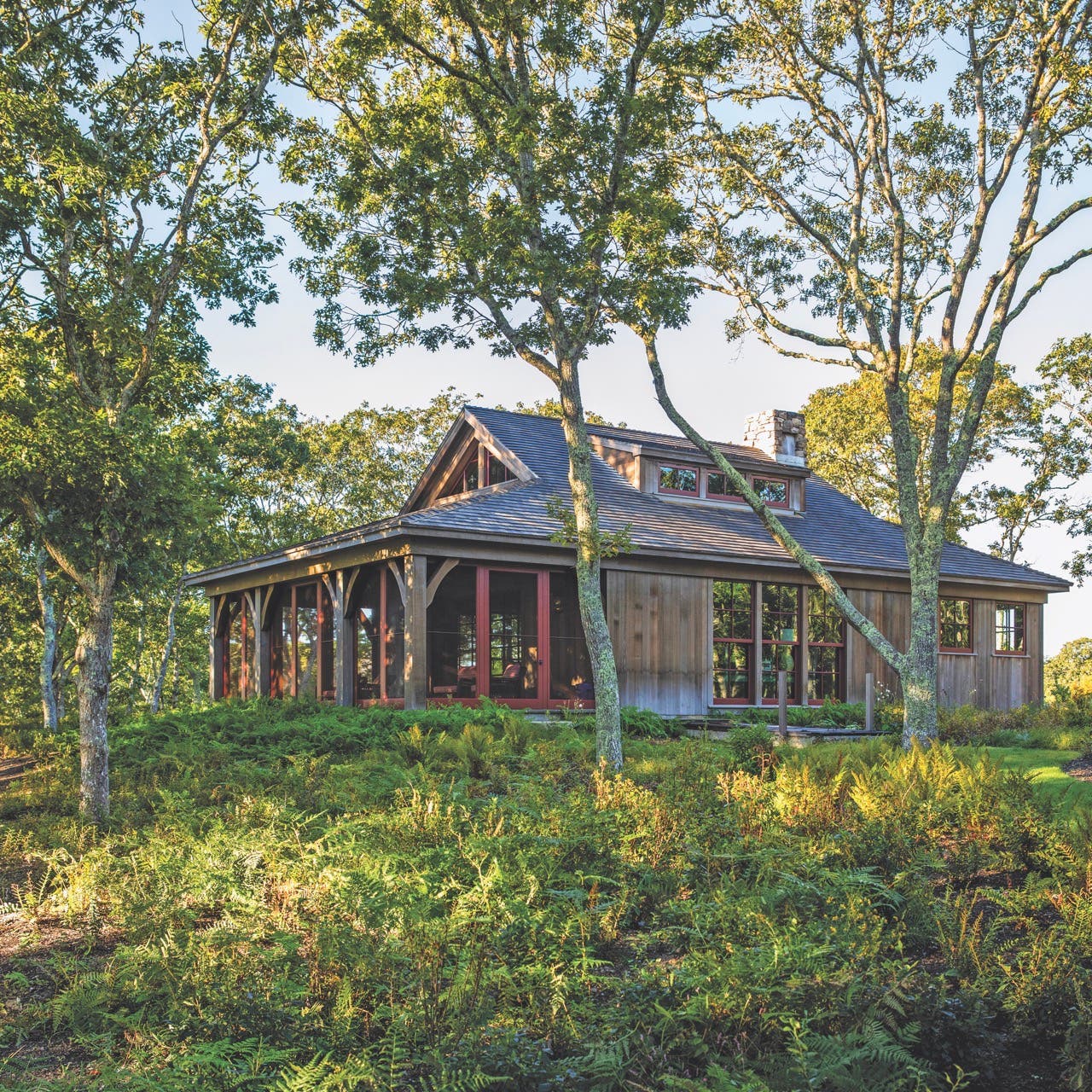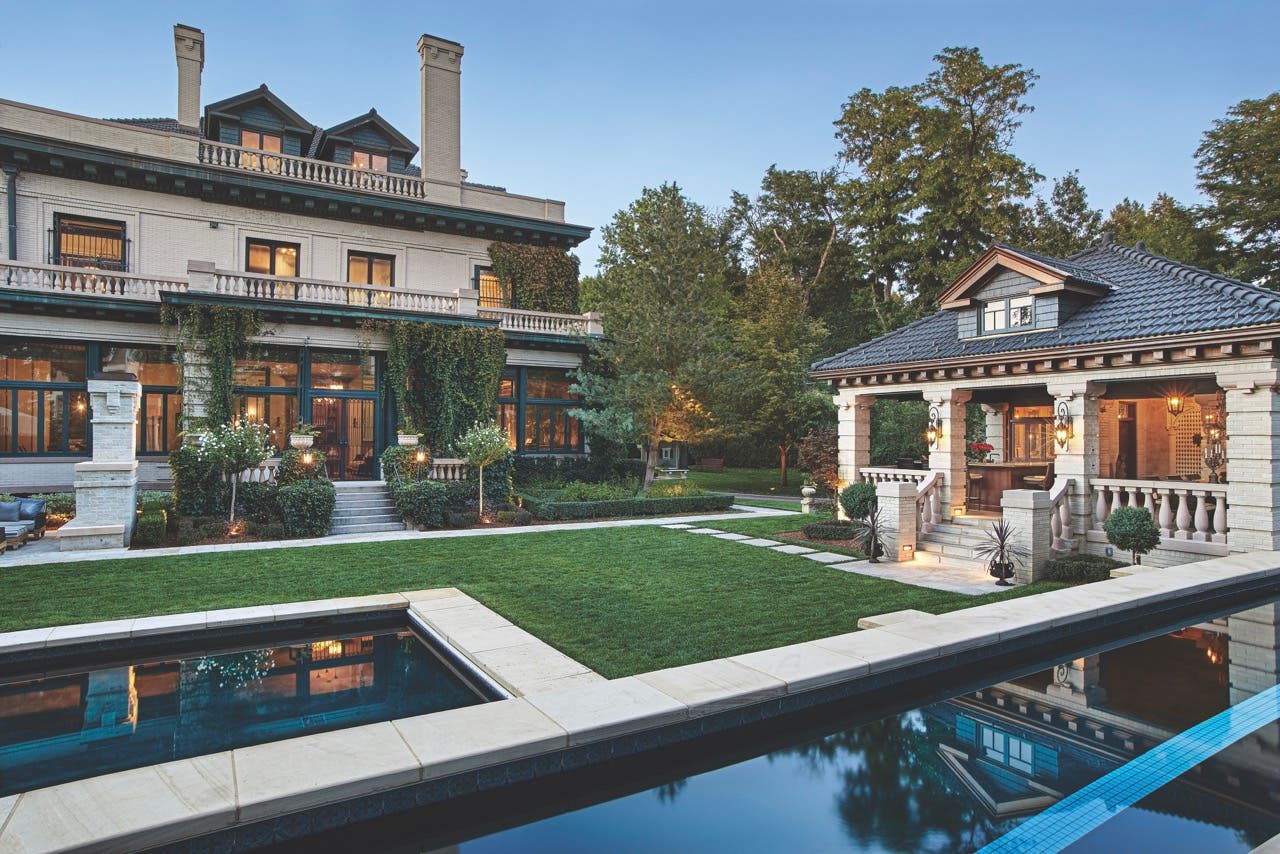
Palladio Awards
Ekman Design Studio: Pool Pavilion and Folly
This grand Italian Renaissance Revival estate, located in a prominent Denver historic district, has an impressive pedigree.
Built in 1907, the National Landmark residence was designed by architects Willis Marean and Albert Norton. Marean and Norton also designed a number of other distinguished Denver structures, including the Cheesman-Boettcher House (now the Colorado Governor’s Mansion), the Greek Theater in Civic Center Park, and the Cheesman Park Pavilion.
The estate included a Gilded Age main residence, a carriage house, and an existing pool.
The clients desired an overall redesign of the entertainment courtyard space, an area of the estate that had not been touched or thought about for years.
They asked Denver’s Ekman Design Studio to design the addition of a pool pavilion, a lap pool, and renovate the existing pool while enhancing the overall design of the estate.
“The challenge was to organize a courtyard master plan that orientated the new structures to the residence and to the mountains, bringing a sense of order and place to the entertainment courtyard without moving the existing pool,” says architect Stephen P. Ekman, AIA, principal of Ekman Design Studio.
To anchor the courtyard, the architectural team, led by Ekman, designed a pool pavilion that is intended to act as a garden folly.
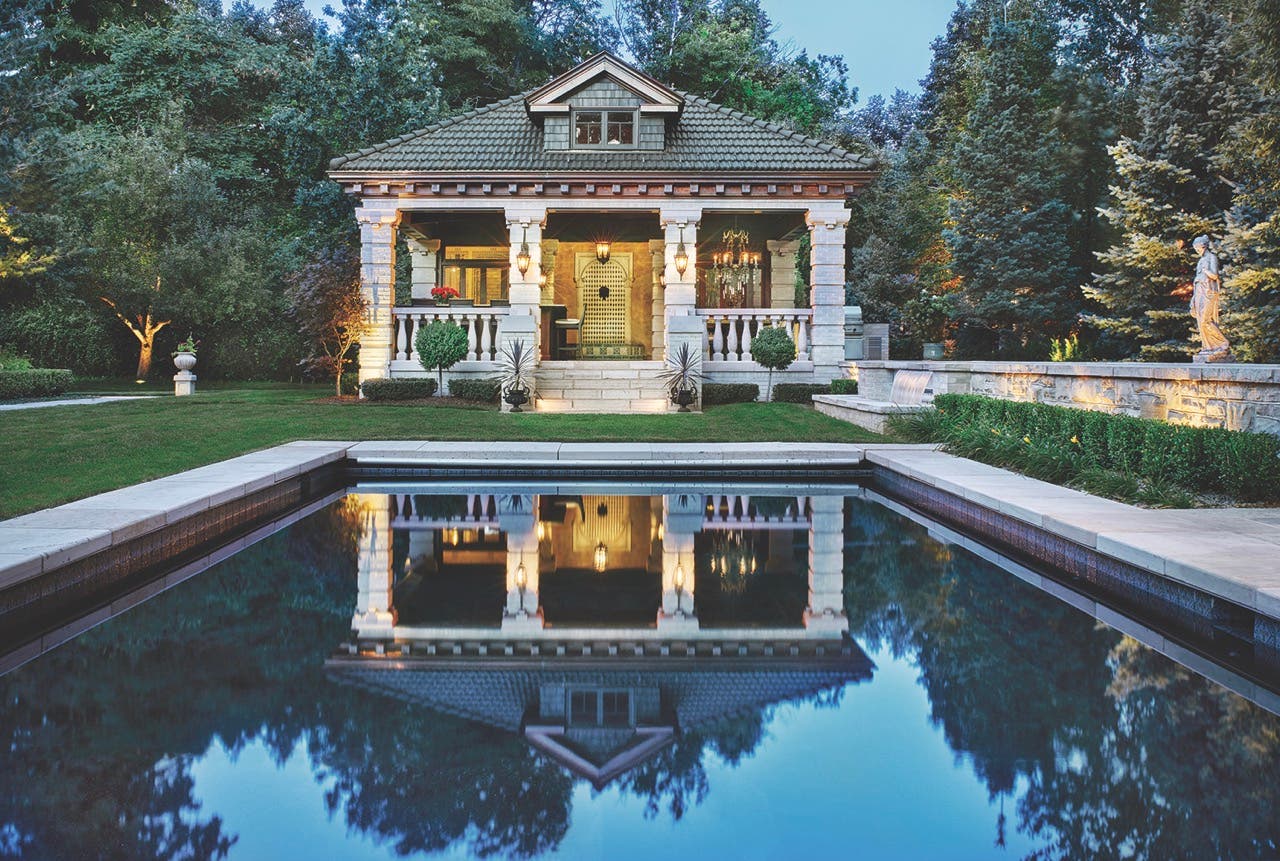
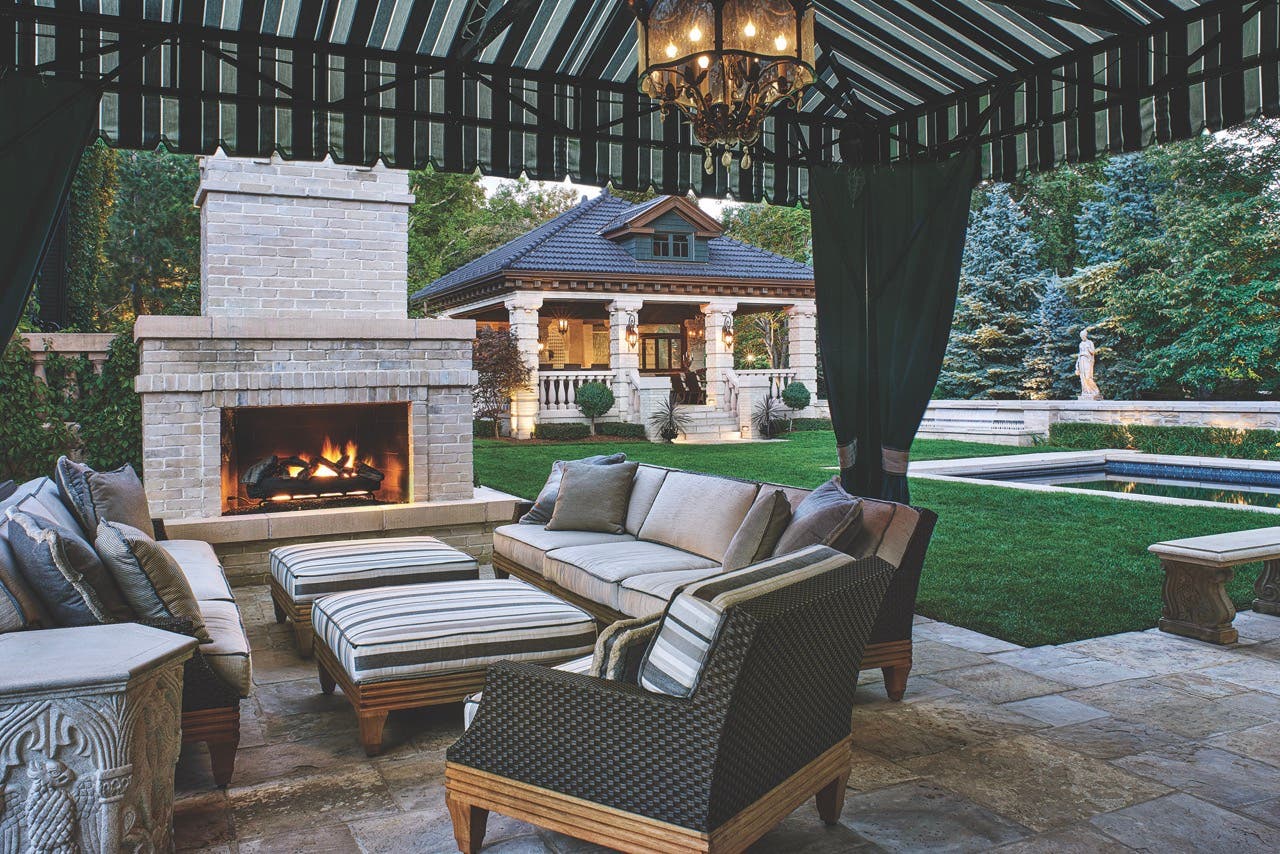
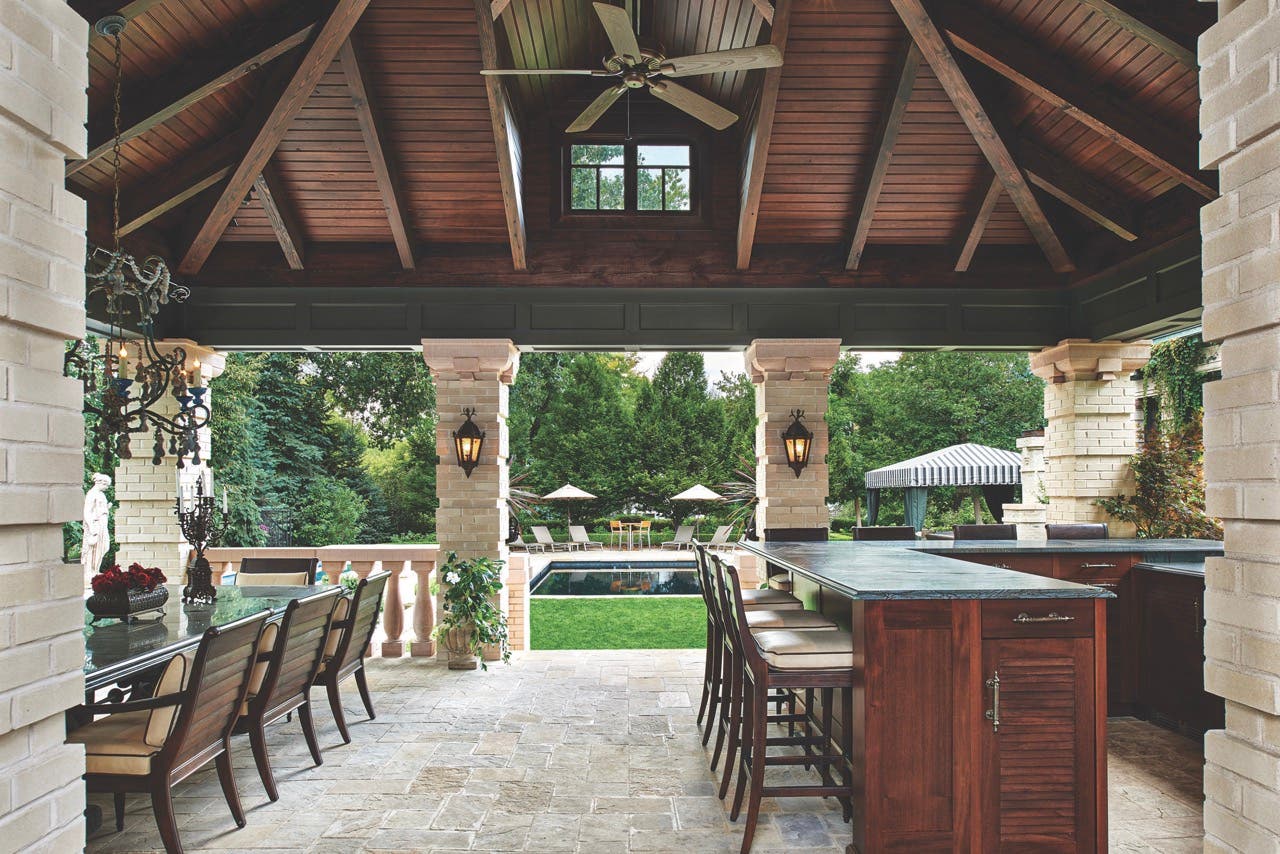
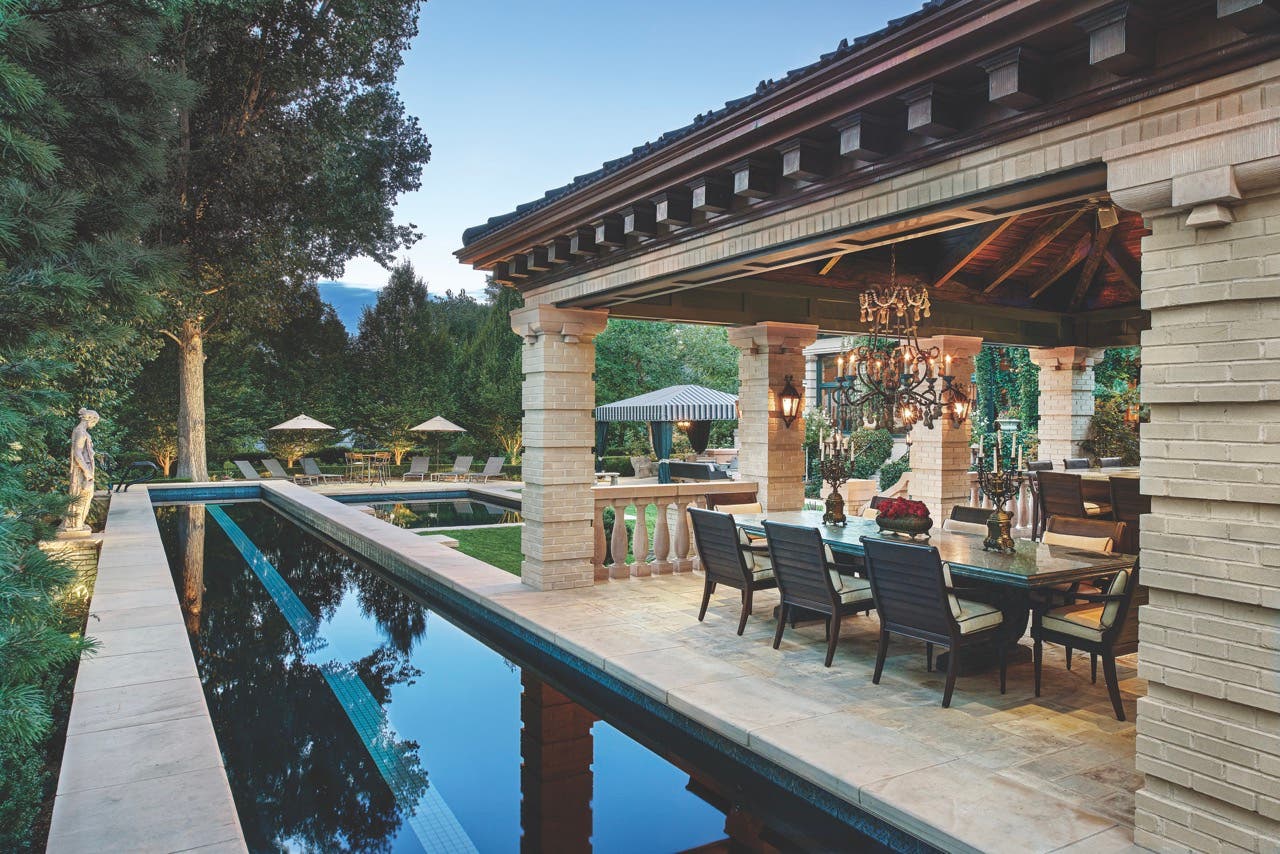
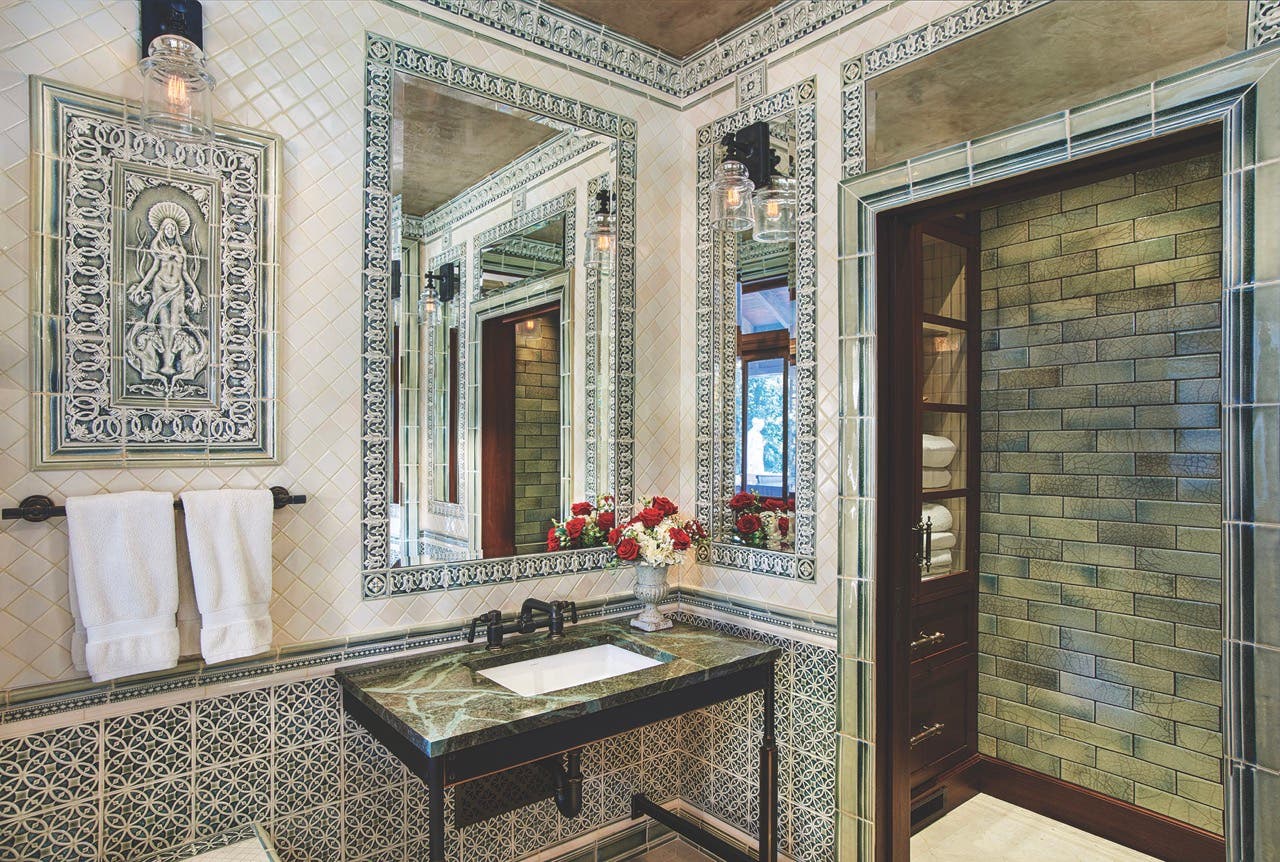
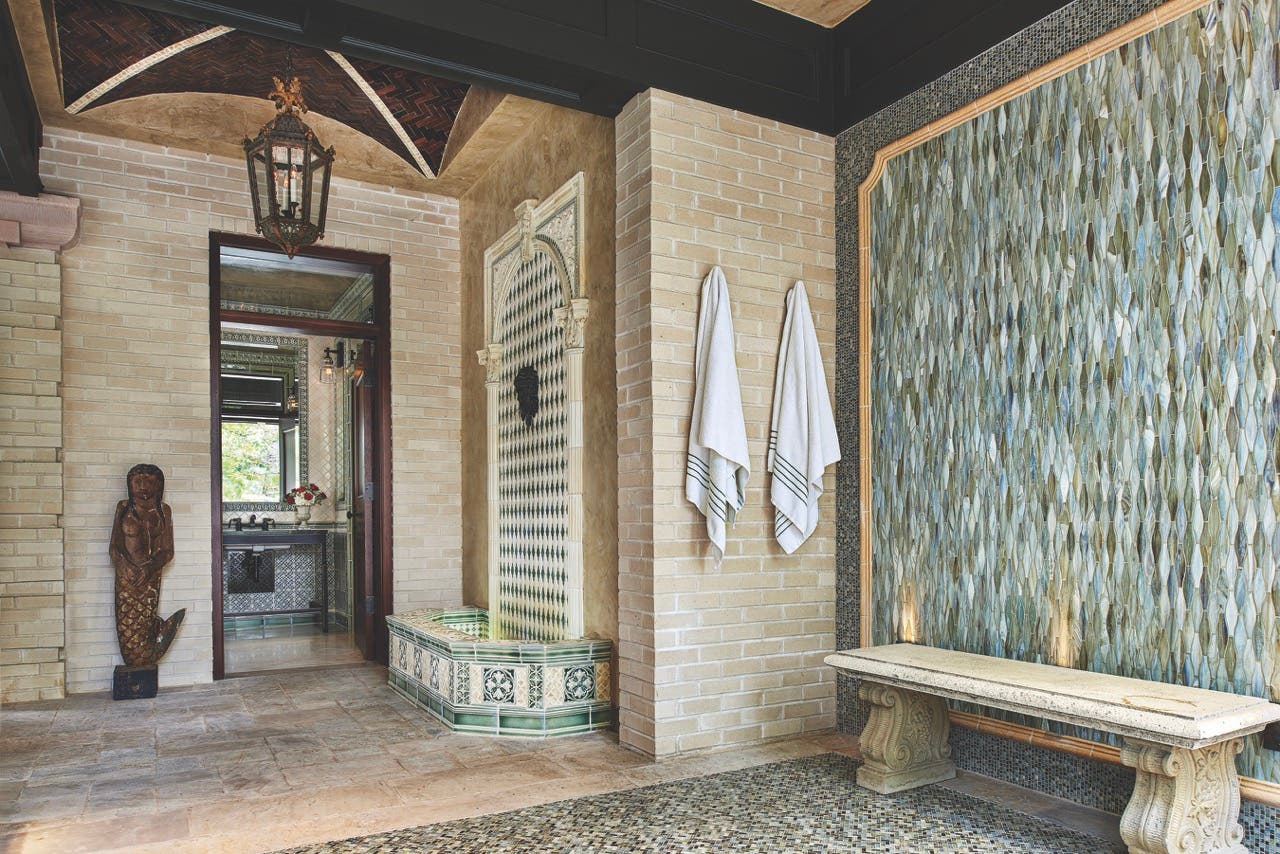

“The folly’s form and structure had to be sympathetic and compatible to this landmark estate and the entire historic district,” says Ekman, adding that the project had to meet the strictly interpreted Secretary of the Interior Standards and the local historic district design guidelines.
The property, while generous, is on an urban corner lot where the zoning code dictated the folly’s square footage and height restrictions.
Conceived as a temple form, the 676-square-foot pavilion’s principal architectural features are derived from those on the main residence.
It has a terra-cotta tile hipped roof, rusticated brick columns with cast-stone capitals, cast-stone balustrades, and a detailed crimped-copper cornice with modillions whose design was inspired by the Divus Temple in the Roman Forum. The proportions of the elements were reduced to one-third.
Other elements, including the balustrade, were simplified, while some details, like the classical triglyphs on the rusticated column capitals, were eliminated to allow the pavilion to be subordinate to the main residence in form and detailing to meet the historic standards and guidelines.
“The idea was to have everything look as though it was part of the estate’s original design and as always intended,” Ekman says.
The pool pavilion, which sits on an east-west axis with the existing pool and the mountain view corridor, is like a miniature version or folly of the grand 1907 house.
It has everything the owners desired. The covered dining and elevated entertainment spaces overlook the entertainment courtyard while the more intimate spaces—the open shower and bath and dressing rooms—are placed in the rear of the pavilion.
Large custom mahogany windows between the kitchen and bath are fitted with switchable “smart” glass to create privacy.
When these rooms are not being used, there’s an open sight line from front to back that visually extends the space to encompass the entire pavilion. The hipped timber ceiling over the kitchen, dining, and entertainment areas further expands the space, while a dormer above lets natural light into the vaulted ceiling space.
The team’s siting of the lap pool, which the owners didn’t want to be visible, is clever. To lessen its appearance, it is raised to the same height as the pool pavilion and further hidden by boxwood borders. It is faced with the same beaded rhyolite stone as the privacy wall surrounding the estate, another technique that seamlessly melds it with its surroundings.
The side yard, once so neglected, has now become a focal point of the estate’s Palm Room and entertainment courtyard of this urban oasis.
“The homeowners now entertain more often in the main house’s Palm Room and living room,” Ekman says. “When you look out the windows and French doors of the Palm Room, you can see the waterfall fountain that sits in front of the new lap pool. In the evening, it becomes a reflecting pool, presided over by a statue of a water nymph and a backdrop of Colorado pines.” TB
Key Suppliers
Architect
Ekman Design Studio
Contractor
Paul Newmyer, Newmyer Contracting
Landscape Architect
Adam Hallauer, Designs by Sundown
Masonry
Kurt Bares Masonry & Nostalgic Stone
Interior Designer
JH Todd Interiors
Ludowici Roof/Coppersmith
Raleigh Roofing and Restoration
Cabinetry and Millwork
Woden Woods
Pools
Colorado Pools Unlimited
Interior Tile
Sonoma Tilemakers; Lundada Bay
See the complete list of 2024 Palladio Award Winners



